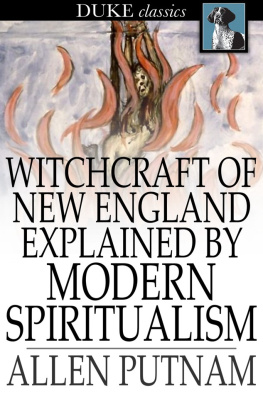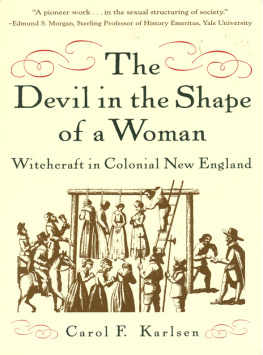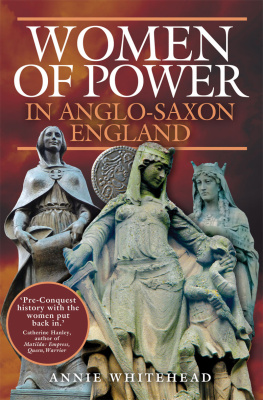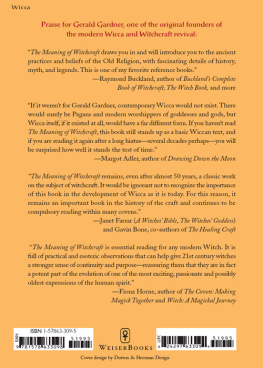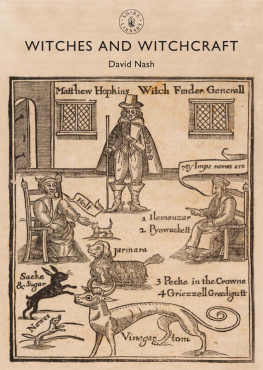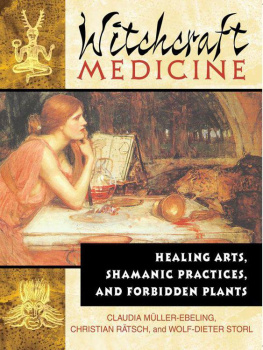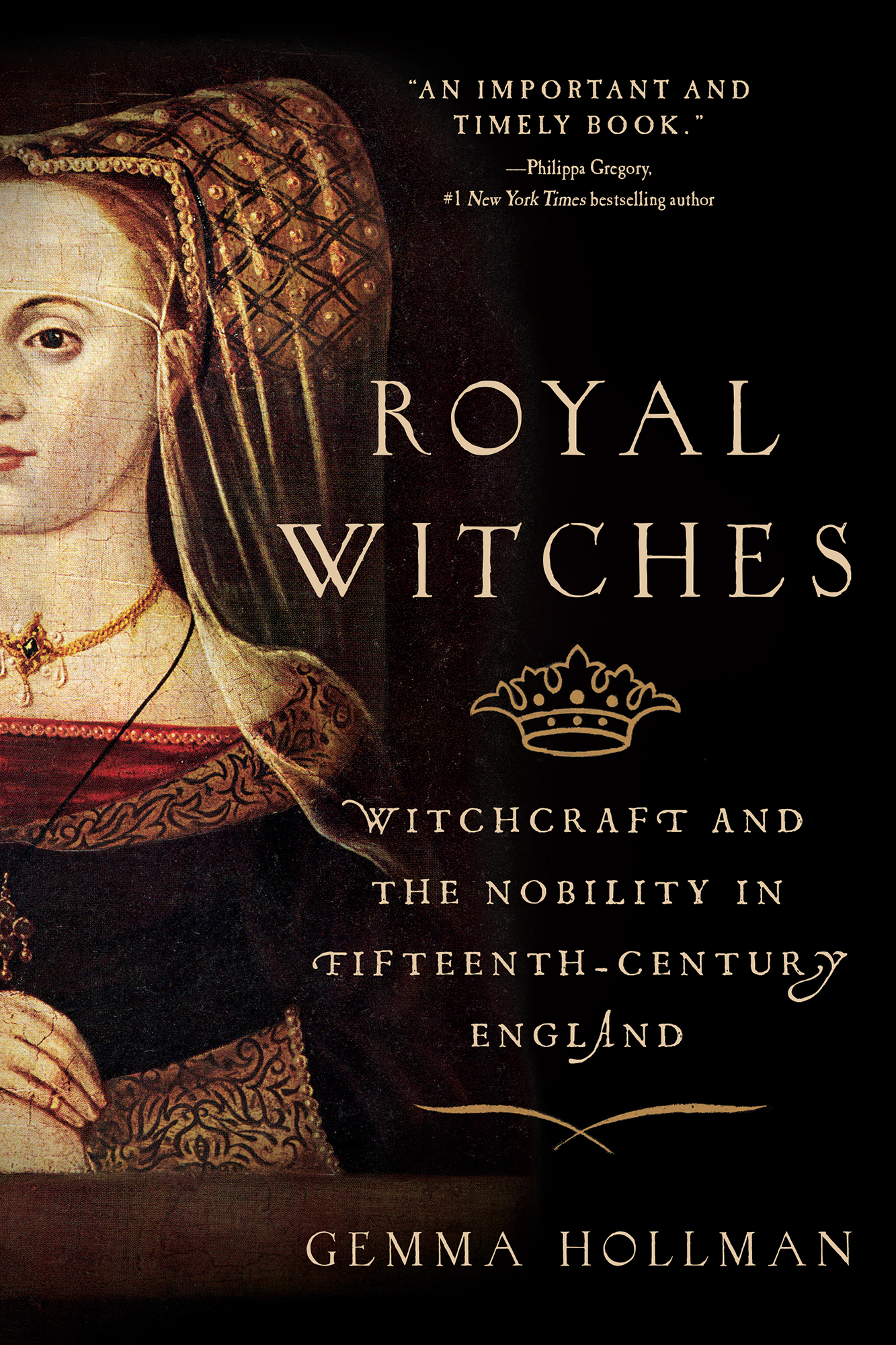Contents
Guide
R OYAL W ITCHES
Pegasus Books Ltd.
148 W 37th Street, 13th Floor
New York, NY 10018
Copyright 2020 by Gemma Hollman
First Pegasus Books hardcover edition September 2020
Jacket design by Faceout Studio, Tim Green
Cover art from Getty and Alamy Images
All rights reserved. No part of this book may be reproduced in whole or in part without written permission from the publisher, except by reviewers who may quote brief excerpts in connection with a review in a newspaper, magazine, or electronic publication; nor may any part of this book be reproduced, stored in a retrieval system, or transmitted in any form or by any means electronic, mechanical, photocopying, recording, or other, without written permission from the publisher.
ISBN: 978-1-64313-332-4
Ebook ISBN: 978-1-64313-395-9
Distributed by Simon & Schuster
www.pegasusbooks.com
For Mr Hough and Ms Robinson
for encouraging my love of history
Thorowowt a pales as I can passe,
I hard a lady make gret mone,
And ever she syked and sayd, Alas!
Alle wordly joy ys from me gone;
And alle my frendes from me can fie;
Alas! I am fulle woo begon;
Alle women may be ware by me.
The Lament of the Duchess of Gloucester, late fifteenth century
ACKNOWLEDGEMENTS
WRITING A BOOK is a huge task, and as such there are always many people to thank in its production. My first thanks must go to Dr Sethina Watson at the University of York, who first introduced me during my undergraduate degree to the plethora of amazing women in medieval society. I was intrigued to learn not only how powerful women at court could be, but how under-studied they were and sometimes difficult to trace. It inspired me to go down this particular route of research. My thanks also extend to Dr Jeremy Goldberg, who helped foster my idea to study royal witches and supported me as I developed the idea in its infancy as a Masters dissertation.
Huge thanks go to my mother Bernadette, who supported me financially during the writing of the book, and without whom it would not have been possible. Thanks must also go to all of my friends and family who encouraged me to put pen to paper, read over first drafts, and gave me great feedback and overall support. This includes, but is not limited to, my father Ross, Aaron, Ella, Ann, Jill, Cat, Fiona, Harriet, Lorraine and, most specially, to my partner Conor for being my rock through the process. Thank you for keeping me sane during this period. Thanks finally go to Chrissy and the rest of the team at The History Press for being so enthusiastic about my idea and giving me an opportunity to bring it to public light.
ABOUT THE AUTHOR

GEMMA HOLLMAN has a masters degree in Medieval History from the University of York. She runs the Just History Posts blog and Twitter account and works in the heritage sector. She lives in Hertfordshire, England.

AUTHORS NOTES
LANGUAGE IN THE medieval period was ever changing, just like it is today. In a time prior to the printing press or dictionaries, spellings varied greatly from source to source. This extended to names, and often no two sources will spell a name the same way. That applies also to the people in this book. For ease of reading, I have used the generally accepted modern, anglicised versions of names, and at times translated quotations to modern English. Where appropriate, however, I have included quotations with contemporary spelling, for it can give us a better connection to the past to read the language how it was spoken. Fifteenth-century England is also notorious for a great repetition of names, which can make reading exceedingly confusing. For this reason, I have used first names for those closest to the women, their family members, to make it more personal it is how they would have known each other. For the political players around them, however, I have largely stuck with their titles or surnames to help the reader make an easier distinction between people.
INTRODUCTION
THE FIFTEENTH CENTURY is an extremely popular period for writers of both fiction and non-fiction. It saw the height of the English empire in France, the glory days of the Battle of Agincourt, the trial and burning of Joan of Arc, the fall of the English empire, the turbulent civil war years of the Wars of the Roses, the probable murder of the Princes in the Tower, the Battle of Bosworth, and finally the foundation of the Tudor dynasty of which England and the world is still so fond.
And yet, in among this rich history, the royal women who were so instrumental to these dynasties are almost forgotten. It is only really during accounts of the Wars of the Roses that historians seem to remember the presence of these women, and that is only because their role cannot be ignored; Margaret of Anjou, in particular, led the fight on behalf of her husband King Henry VI who, by this point, was almost entirely incapacitated by his mental illness.
This book focuses on four women who were part of the royal family during this century. The first is Queen Joan of Navarre, who came to England at the start of the century when she married King Henry IV. Next is Eleanor Cobham who, in 1428, married Humphrey, Duke of Gloucester, who was one of Henrys sons and thus a Prince of England. Humphreys brother, John, Duke of Bedford, married the next woman in this book, Jacquetta of Luxembourg. Jacquettas second husband was the knight Richard Woodville, with whom she had the final woman in the book, Elizabeth Woodville. Elizabeth Woodville eventually married King Edward IV and became queen.
Despite their crucial role in government and politics, Elizabeth Woodville is the only woman of the four to have an entire book dedicated to her. The other three have usually appeared as footnotes in the history of men, mentioned only for the children they gave birth to, or for how they led to the downfall of the men they were connected to. This book is the first ever volume to be dedicated solely to these four women, and to link their stories together. All four came from different countries and different levels of society, and none were born into the English royal family. Despite this, they were linked by one incredible thread: they were all accused of using witchcraft to manipulate the king to their will, be it through love or death. When the stories of the mass witch hunts and hysteria of the early modern period are so well known, many are astonished to find that two centuries earlier these accusations were hitting the highest echelons of English society. What is even more astonishing is how very few have ever heard of these accusations.
The fifteenth century saw changes and instability in English politics that had not been seen for a long time. At the turn of the century, a new king, Henry IV, was sitting on the throne after the usurpation of the previous king, Richard II. The wars with France were renewed, and the accession of the 9-month-old King Henry VI, alongside the resulting extended regency, meant that factions grew at court with conflict and in-fighting rife. This was only exacerbated by the civil wars in the second half of the century, and the fact that there were four different Kings of England between 1483 and 1485.




